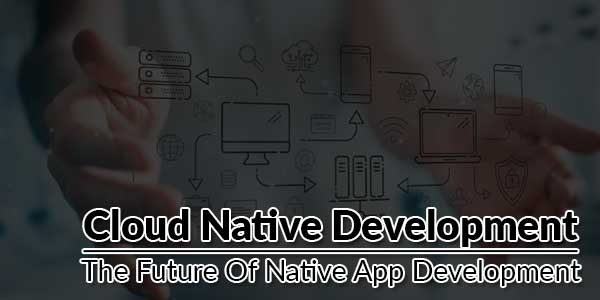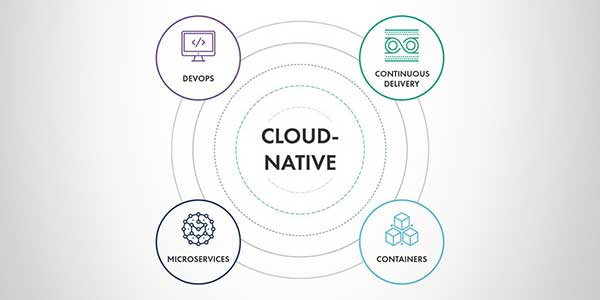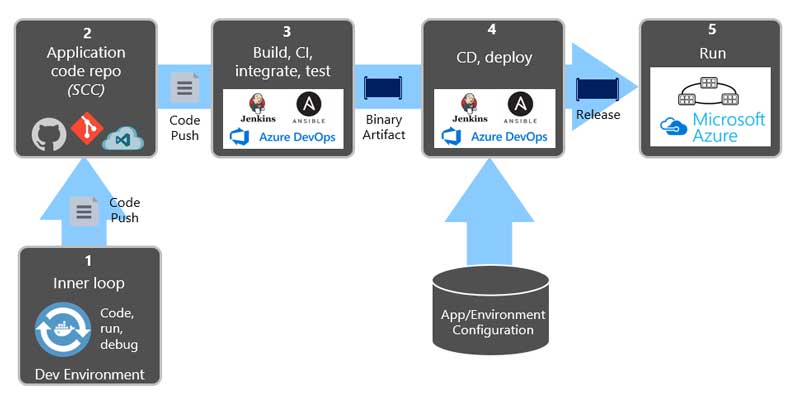
In the current era in which digital has now become a fundamental element, competitive differentiation is based on the adoption of software-driven business models and on rapid and efficient application development. In this regard, we hear more and more often talk about Cloud Native approach, Cloud Native Development, or development of Cloud Native application, as a method that allows you to obtain these results effectively.
Table of Contents
But What Does Cloud Native Mean And What Does Adopting This Approach Entail?
As we said, in a way in which digital has taken over, companies must put the creation of software applications at the center of their business strategy; often this software-driven transformation is not simple and requires huge investments in:
- Open architectures
- Development and automation processes
- Culture of collaboration
in order to deliver value, high performance, and obtain an improvement of software development and delivery processes.
All this requires a new approach to IT, which makes it possible to increase the speed and efficiency of the Cloud-based operating model and allow companies to configure, run and improve responsive applications on any type of cloud: public, private, hybrid, according to the requirements.
This approach is identified in the term Cloud-native: a combination of technologies and techniques that allow you to create resilient and monitorable systems, with the aim of developing and distributing quality applications and obtaining shorter software life cycles guided by continuous user feedback.
The native cloud technologies thus enable organizations to create and run scalable applications in modern and dynamic environments such as public clouds, private and hybrid.
Native Cloud Development Must Also Include:
- a collaborative DevOps approach, based on the Agile and lean principles ;
- the use of containers to streamline application development and orchestrate workloads in a scalable way
- a modular microservice architecture, which enables faster and simplified updates;
- The API, that put everything in connection seamlessly, simplifying maintenance and increasing levels of security.
All this, combined with robust automation, allows finding great improvements in the application development process which will see more frequent releases and efforts and risks reduced to a minimum.
It can be said that:
The adoption of the Hybrid cloud, the DevOps culture, and methodology, and the development of cloud-native applications allow bridging the gap between traditional monolithic architectures and the modern approach to application development.
The Role Of The Hybrid Cloud In The Cloud-Native Approach
The hybrid cloud enables the connection between private and public clouds, often used separately by the operations and development teams, so that applications can be transferred between different environments and teams according to needs. The hybrid cloud is a stable environment that allows you to create, distribute, and manage applications: it enables parallel execution of cloud environments, containers, and virtual platforms.
In a hybrid cloud environment, operational and development teams can respond to their release and scalability needs, all of which enable collaboration in DevOps perspective.
This will allow Developers, Operations, and other departments to collaborate in integrated environments using container-based microservices-based applications.
We can, therefore, say that the Cloud Native approach, supported by an adequate technological stack that integrates all these components, is ideal for a company that wants to innovate, develop, deliver and test new ideas quickly, without sacrificing quality.
There is a foundation, called Cloud Native Computing Foundation (or CNCF), which seeks to guide the adoption of this paradigm by promoting and supporting an ecosystem of open source and neutral projects with respect to vendors. The goal of CNCF is to democratize cutting-edge models to make innovations related to the Cloud Native theme accessible to everyone.

How To Develop The Native Cloud Model In 5 Steps?
If the benefits of native cloud applications are manifold, how can the development of the new model ultimately materialize? This 5 step guide can be a good starting point to clarify the main steps.
1.) Favor The DevOps Approach:
The initial step concerns the adoption of the DevOps methodology, which suggests a series of practices to encourage collaboration between development teams and operations. The result is an acceleration of releases and an increase in software quality.
2.) Take Advantage Of Containers:
The speed of application development and delivery can benefit from the use of containers (second step of the native cloud strategy) to automate software management operations. Containers are technologies that encompass both the individual application components (microservices) and a complete runtime environment. The application is therefore formed by a set of independent functional units, so it is possible to intervene on one feature without interfering with the others.
3.) Use Cloud Services:
The use of the cloud (especially in hybrid cloud mode) allows the creation of a stable environment for the creation, distribution, and management of applications: it enables the parallel execution of cloud environments, containers, and virtual platforms.
In such an environment, the operations and application development teams meet their respective release and scalability needs, thus enabling collaboration in DevOps perspective.
SaaS, PaaS, and IaaS technologies (the integration platforms for the synergistic operation of solutions on the cloud and locally) also offer ready-to-use resources to accelerate and simplify application development. The use of as-a-service assets is the third rule for native cloud design.
4.) Optimize The Development Cycle:
The efficiency promised by native cloud apps goes hand in hand with the optimization of the software development cycle. The fourth step concerns the adoption of automatisms that allow us to verify the integration, carry out tests, identify bugs, and distribute updates, and so on. The use of Continuous Integration and Continuous Delivery practices and solutions, specifically, is the key to planning, building, and accelerating the release and therefore have complete control over the entire life cycle of the software. Of fundamental importance are also the automation of development, the orchestration of application releases, which allows you to manage release pipelines and dependencies between multiple teams, tools, and on different infrastructures, and the analysis of DevOps Insight.
5.) Monitor Devices And Services:
As they say “power is nothing without control”. Here, therefore, that continuous monitoring enters the list of steps towards the cloud-native approach. The control of devices and services, implemented through specific software, is essential to notify the technical department of malfunctions and intervene with a view to continuous improvement.
And has your company already started the transformation?
Where Are You At With The Move To A Cloud-Native Application Development Mode?
Cloud computing today reveals the unique architectural solution that can support the needs of efficiency and flexibility of modern digital enterprise.
In hybrid and multi-cloud environments, applications must also evolve towards development and design models that allow you to take advantage of the benefits of the cloud and ensure the appropriate speed and quality of the release.
Technically translated, native cloud applications marry the same architecture of the cloud, that is, they are made up of “elementary bricks” – microservices – atomic units that can be quickly called up and combined together within a modular structure.
The abstraction characteristics of the microservices (the application works independently from the typology of the underlying system) offer a double advantage. First, it becomes possible in the design phase to take advantage of a temporary computational capacity decoupled from hardware resources, allowing developers to focus on design without worrying about infrastructure. Furthermore, the microservices approach guarantees the same automated experiences of development and management on public, private, or hybrid cloud.

 About the Author:
About the Author:











thanks for sharing this valuable information with us in this blog for native app development. if you are looking for native app developers then you can check out top native development companies list for free and connect with them easily at Develop4u
Welcome here and thanks for reading our article and sharing your view. This will be very helpful to us to let us motivate to provide you more awesome and valuable content from a different mind. Thanks for reading this article.